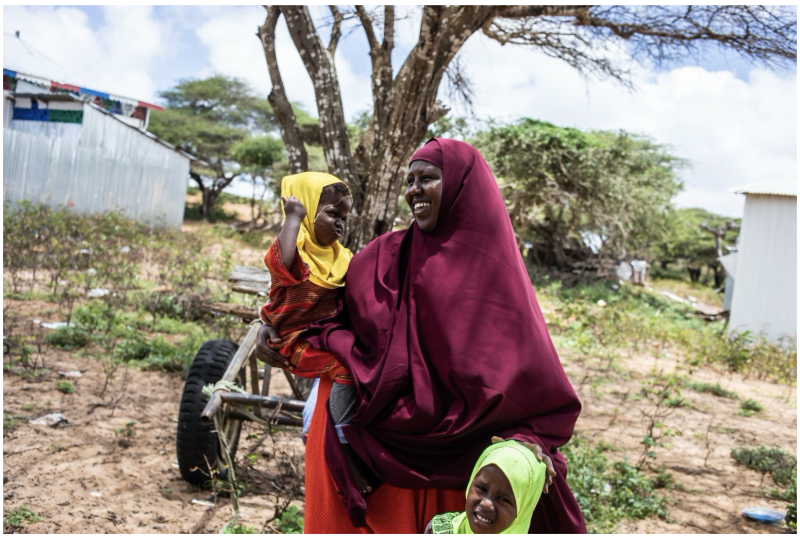
Stories from the field: Special series on the COVID-19 response – Somalia
January 12, 2021
Eastern Mediterranean Region
Somalia
Every day, except Fridays, Beelo Botan and her team visit around 30 households in Howlwadaag village, Galkacyo, the third largest city in Somalia. They are among the many community rapid response teams set up by the Somali Government and WHO to help address COVID-19. They record and share health information, and are conscientious about wearing masks and washing their hands regularly while at work.
“Most people in Galkacyo know who we are, so they alert us as soon as someone has symptoms of COVID-19 or even polio-like symptoms. If we find someone who has COVID-19 symptoms, we locate them immediately and give them a face mask to wear and request them to stay away from their family and friends. Then, we inform the district response teams, like the District Polio Officer and District Medical Officer, to verify the case and take further action. If this case is severe, and needs further support, we transfer them to the nearest health facility/isolation centre. But if the case is mild or a moderate suspected case, we collect a sample and send it to the laboratory, while requesting them to self-isolate until they receive their result,” says Beelo.
“I really enjoy my job because I am working for my community and my messages may have benefited many people, including those who had no idea how to keep safe from COVID-19,” she added.
The first case of COVID-19 in Somalia was declared on 16 March 2020. By 9 November, Somalia had more than 4,200 cases and 107 deaths attributed to COVID-19.
The government had been making determined efforts to strengthen its health system, move towards universal health coverage (UHC) and strengthen preparedness through the development of a National Action Plan for Health Security. These efforts proved crucial when faced with the spread of COVID-19. WHO is working closely with the Somali Government to address the pandemic and deliver UHC.

Beelo Botan, a health worker, along with her community rapid response team, visits households in Galkacyo as part of their work to support the COVID-19 response in Somalia.
©WHO/Somalia
Somalia’s health challenges
Somalia, with a population of 15.4 million, is a low-income country. Its economy is dependent on imports and 70% of the population is engaged in pastoralism, agriculture and the charcoal business. Just three out of ten women and five out of ten men of working age are employed.
In terms of health, the main issues facing the population are communicable diseases and respiratory infections, and issues relating to maternal and child health-related morbidities and nutrition. Average life expectancy stands at 55.7 years and only 25% of Somali people have access to essential health services. According to the International Health Regulations index, only 6% of people in Somalia are protected from health emergencies and infectious hazards.
The vast majority of Somali people therefore struggle to keep safe and healthy.